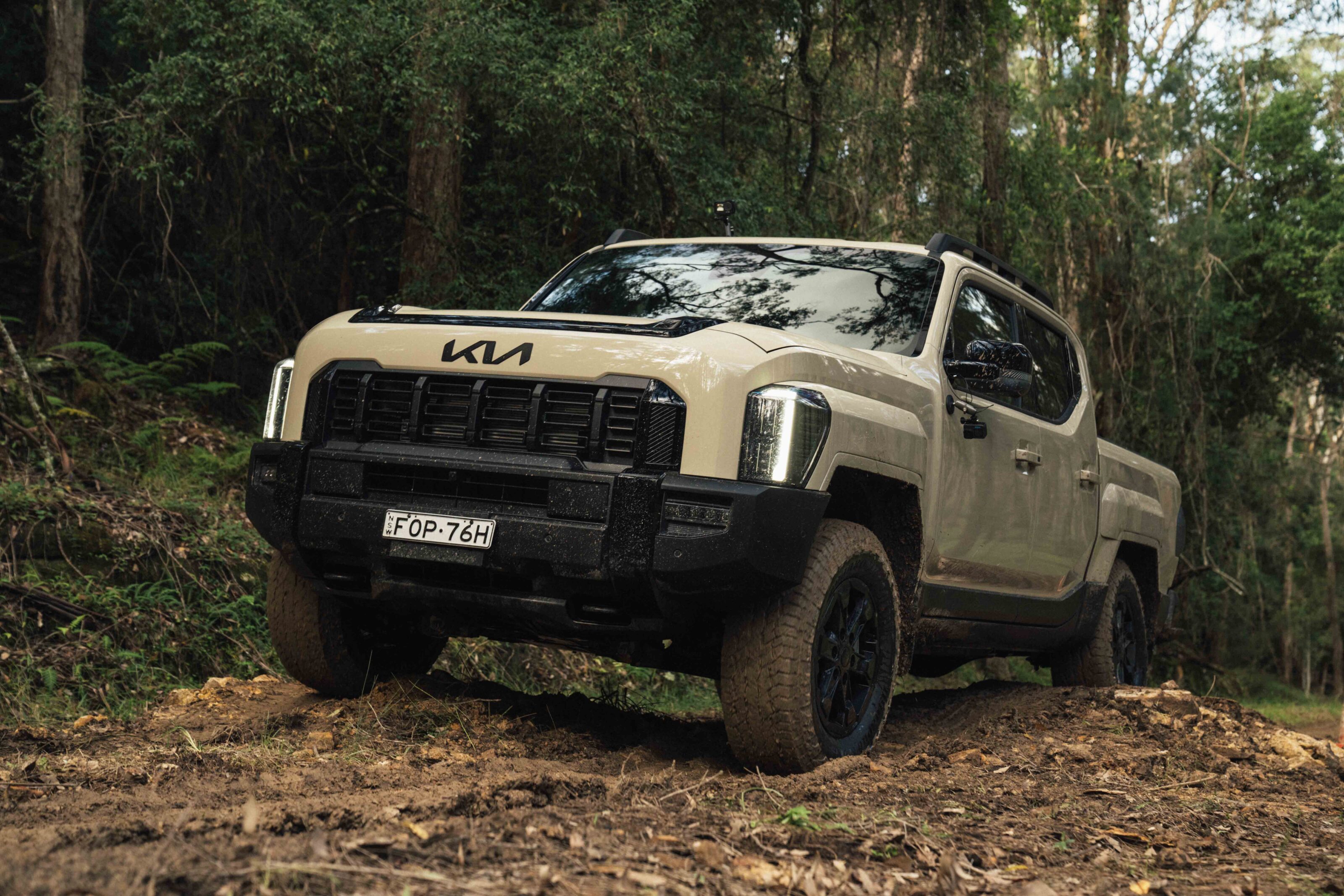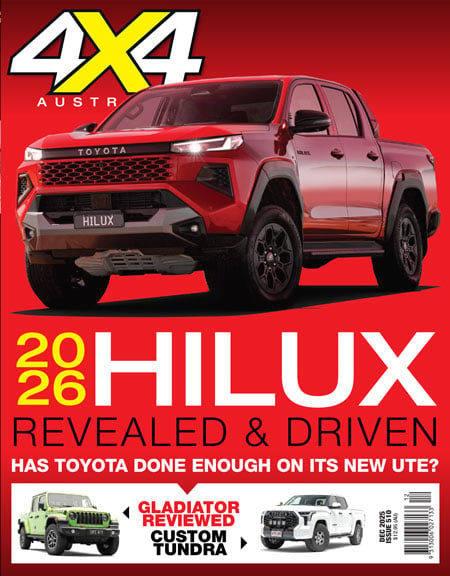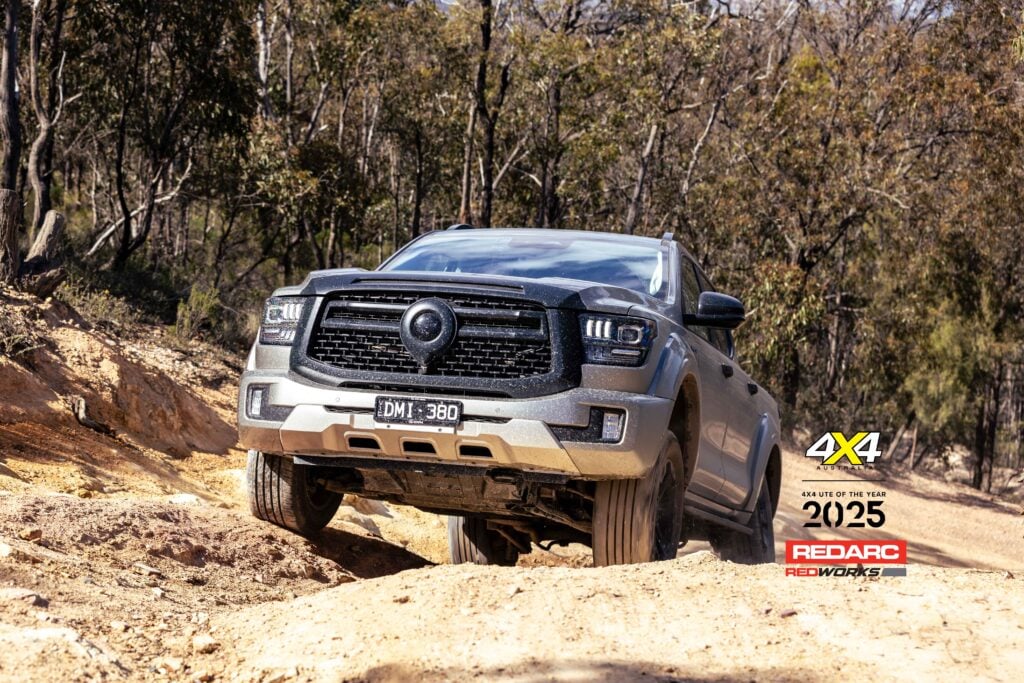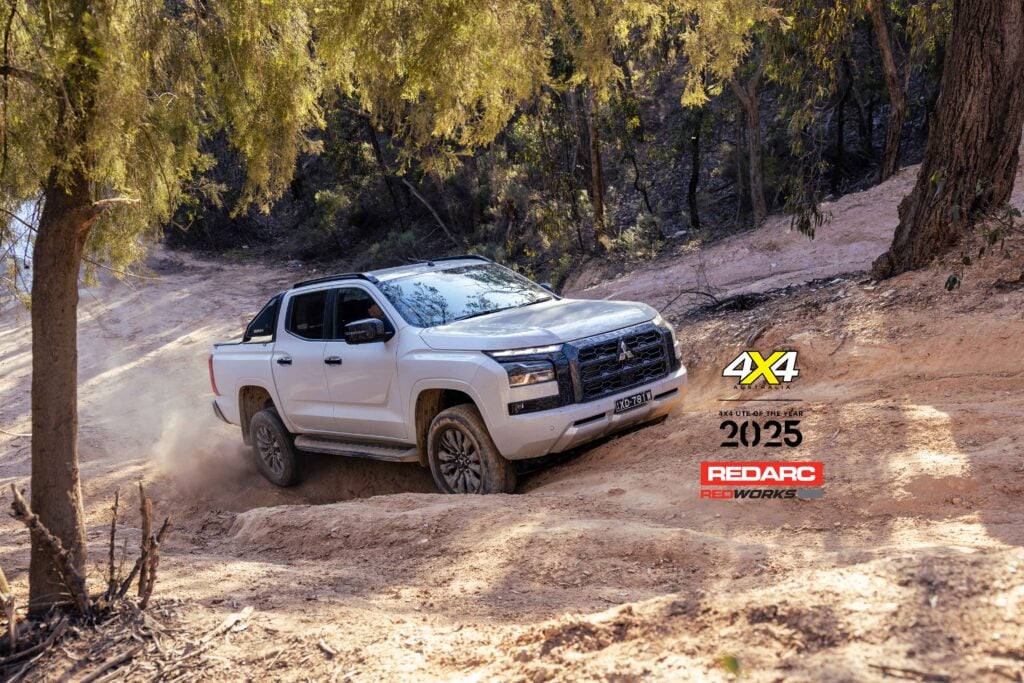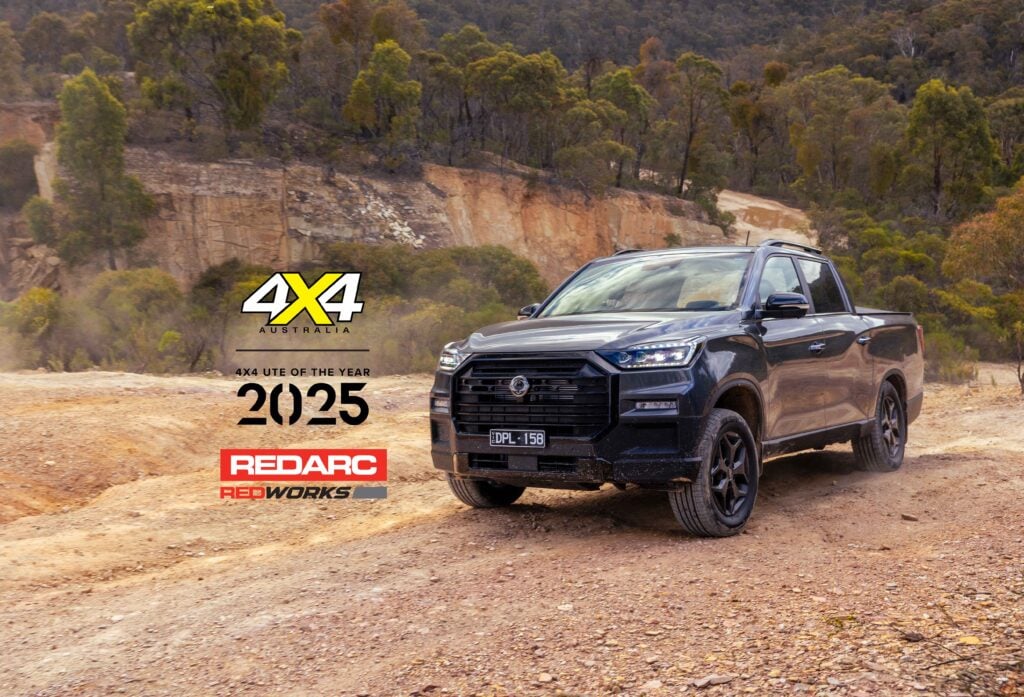Following a massive media campaign in Australia and a global unveiling last year, Kia is set to launch its all-new Tasman midsize ute to the market this coming July. But before the Korean manufacturer does that, it gave us a sneak peak of the Tasman’s off-road capabilities at a drive event in NSW.
The Tasman utes made available to us on the private property were all pre-production models, and not all up to final specification and finish, but the Kia team told us that the Tan Beige Tasman we had to drive was pretty close to the top of the range X-Pro model.
JUMP AHEAD
What does it get?
The X-Pro is the most off-road focused Tasman thanks in part to its 28mm higher ground clearance over the rest of the Tasman range.
This brings its ground clearance to 252mm. The X-Pro also rides on 17-inch alloy wheels fitted with all-terrain tyres in lieu of the 18-inch wheels paired with highway tyres on other variants. While the Tasman X-Pro also gets a lockable rear differential, no front locker is available from the manufacturer. Lower grades of Tasman get what Kia calls a reactive locking rear diff that is not driver selectable but operates automatically.
Off-road drive modes include Sand, Mud, Snow and Rock settings, while the X-Terrain function gives low-speed cruise control for off-road use. Kia quotes the wading depth at 800mm at speed of 7km/h and slower, and this is enabled by having the engine air intake entering via a highpoint on the inner fender.
That engine is a 155kW/441Nm 2.2-litre turbo diesel backed by an eight-speed automatic transmission and a dual-range, part-time transfer case that also offers a 4×4 auto setting for all-road, all-wheel drive use. This is much like what you find in some Ford Ranger models as well as the Super Select-equipped Mitsubishi Tritons.
Off-road test
Rain at the Central Coast location for this drive meant that the farm’s paddocks were boggy and slippery, making them perfect for testing out the off-road abilities of the Tasman. The team had a set course that took in a range of man-made obstacles, a creek crossing and farm tracks.
Even after the rain, the creek was never going to challenge the Tasman’s 800mm wading depth. The condition of the paddock, however, did deteriorate as more vehicles drove over it and it did pose a challenge for the tyres after a while.
Slipping inside the Tasman X-Pro reminded us how good the interior of this ute looked and felt at the unveiling. It’s big and wide, and well laid out with a large central multimedia screen. Not so familiar was Kia’s placement of the start button on the transmission selector stalk but I’m sure we’ll become more familiar with it with more time spent behind the wheel. Transfer case selection is done via a switch on the centre console where you will also find the X-Terrain (crawl control) selector.
The first section of the test loop was done in 4 Auto allowing the clutch-plate transfer case to automatically distribute drive to the front and rear axles respectively. Moving to either 4×4 high or low range in the transfer case locks it with a 50:50 drive split like you would find in any part-time 4×4 system.
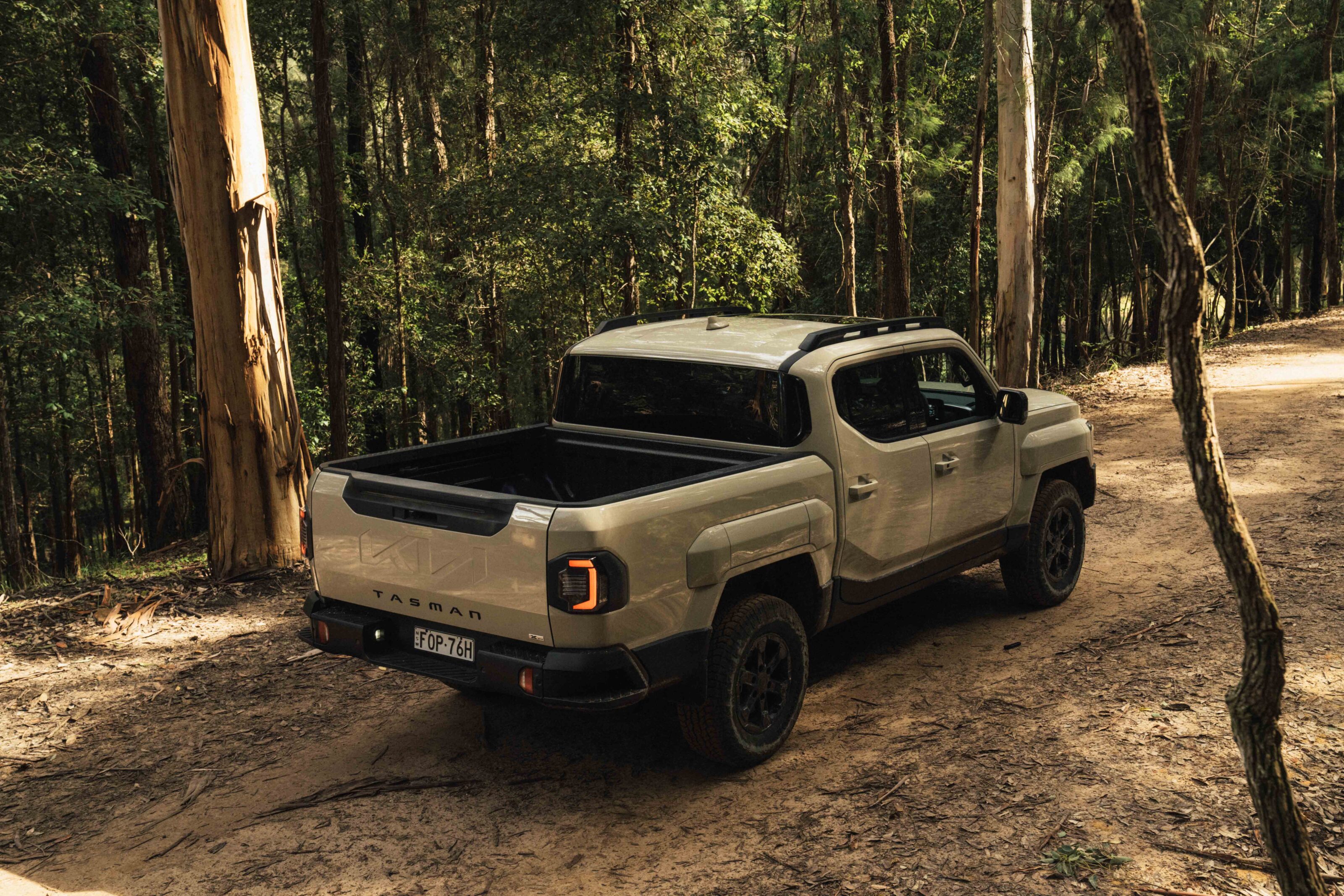
In this Auto setting the Tan Beige Tasman easily climbed up and over the first obstacle and motored through a boggy grass patch at the base. This led to a typical farm track with a firm graded gravel base where the Tasman felt well-planted and solid at the safe speeds for the conditions.
The Kia Australia team really took the lead on developing the ride and handling character of the Tasman, arguing hard with the head office to make changes to suit our conditions and winning more battles than they lost. This wasn’t just in suspension and EDAS tuning but went as far as moving hardpoints of the suspension mounts to allow for longer arms and better leaf springs. As a result, the Tasman feels sturdy and well mannered on such tracks at relatively low speeds but we’ll reserve our full judgement until we get one on wide open outback roads.
When we entered a section of manmade offset mounds to test the suspension articulation it was clear the changes fought for revealed their value. The vehicle provided ample articulation, tucking the rear wheel up and extending the strut of the opposing front as it crossed the mounds. All the while the traction control did its thing without fuss.

A second lap of the course in the Red Tasman, which didn’t have the all-terrain tyres as fitted to the Tan Beige vehicle, was later in the day and the boggy grass at the bottom of the first obstacle had become more, er, boggy! This time the wet grass and mud stopped the Tasman in its tracks and it took a fair amount of fore and aft manoeuvring to eventually get it out. Hampering things was the rear parking sensors, which would automatically apply the brakes as I tried to reverse back into the mud, confusing the bog for something else behind the vehicle. I assume there’s a way to turn this safety feature off but in the heat of the moment it wasn’t obvious.
Once out of that bog the Red Tasman made its way around the course without a problem, even if there was a bit more tyre slip in the muddiest sections of the track.
The next test was a steep-ish climb up a gravel track that we initially did in low range but found the transmission was constantly shifting between second and third gears as we drove it. The Tasman does have paddle shifters behind the steering wheel for manual selection and while this initially gives you the gear you want, it doesn’t hold it, and it would soon shift back up a ratio. This trait wasn’t as evident when driving in high range but it was still there. Remember, this was a pre-production vehicle and it should be a simple transmission calibration fix to sort this issue out, and we look forward to driving the hopefully sorted version come July.
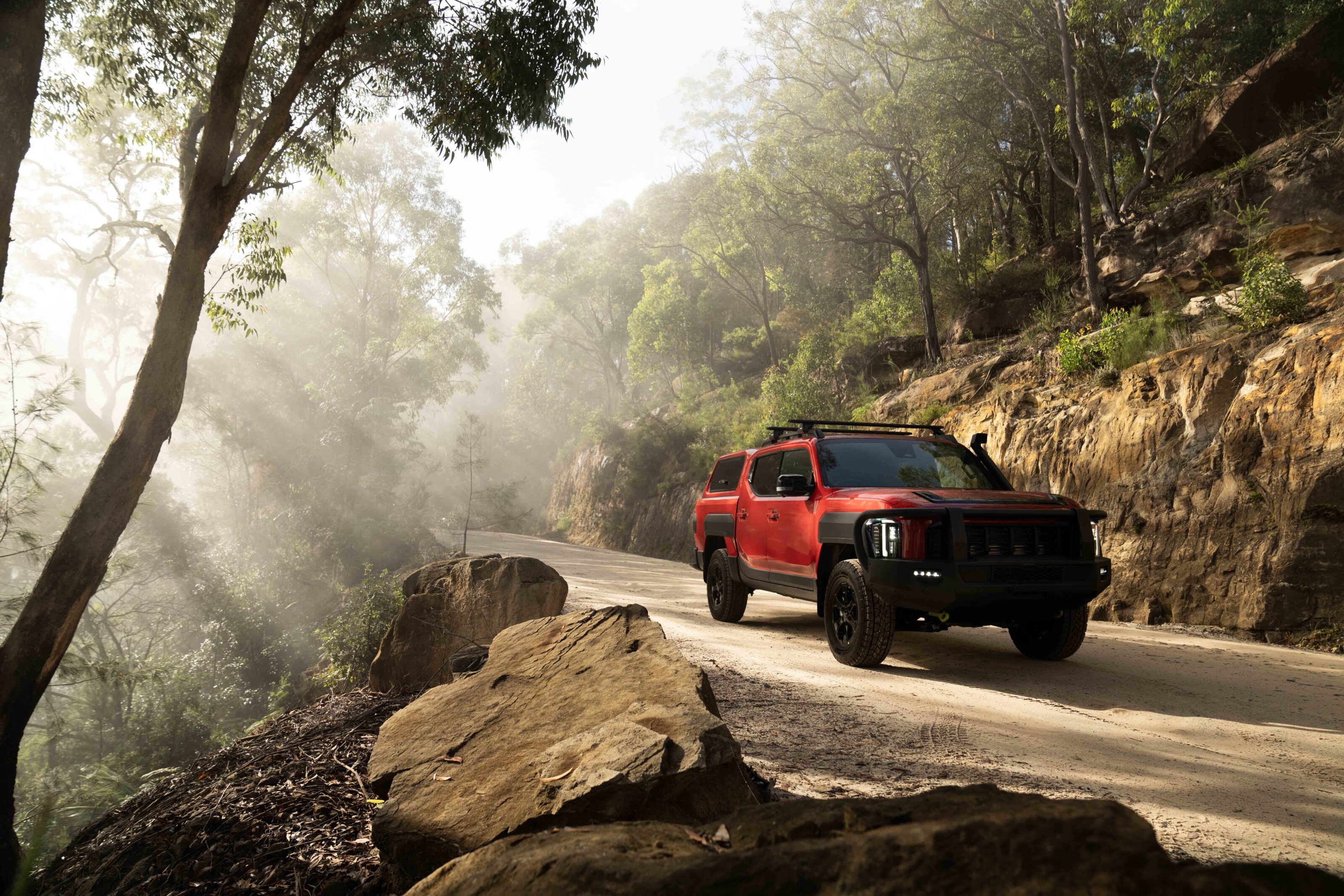
The climb did give us a brief opportunity to try the X-Terrain mode which is basically a low-speed cruise control that holds the vehicle at a set speed while it drives over rough terrain with the driver only having to make steering inputs. It’s a system that works well in other vehicles and this short test didn’t give us any reason to think it won’t do the same in the Tasman.
I took a second run up the hill, this time sitting in the back seat behind the driver, and I’ve got to say, the Tasman offers the most space for rear-seat passengers in the midsize ute class. This allowed me to use the tilt and slide adjustment for the rear seat providing a more comfortable position… and there was still space between the front seat and my knees. The back seat is also wider across the cabin than most others in the class.
Verdict
Kia says that it has 1800 to 2000 orders in the books for when the Tasman launches in July.
This drive not only revealed the Tasman’s off-road abilities but showed that Kia has made some subtle changes to the styling that was widely criticised when first revealed. The grille has changed since the first examples were revealed, and the fender mouldings on the Tan Beige pre-production vehicle were colour-coded rather than being black. We’ve been advised this will only be the case for Tan Beige and White Tasmans, and the mouldings will remain black on all other colour Tasmans.
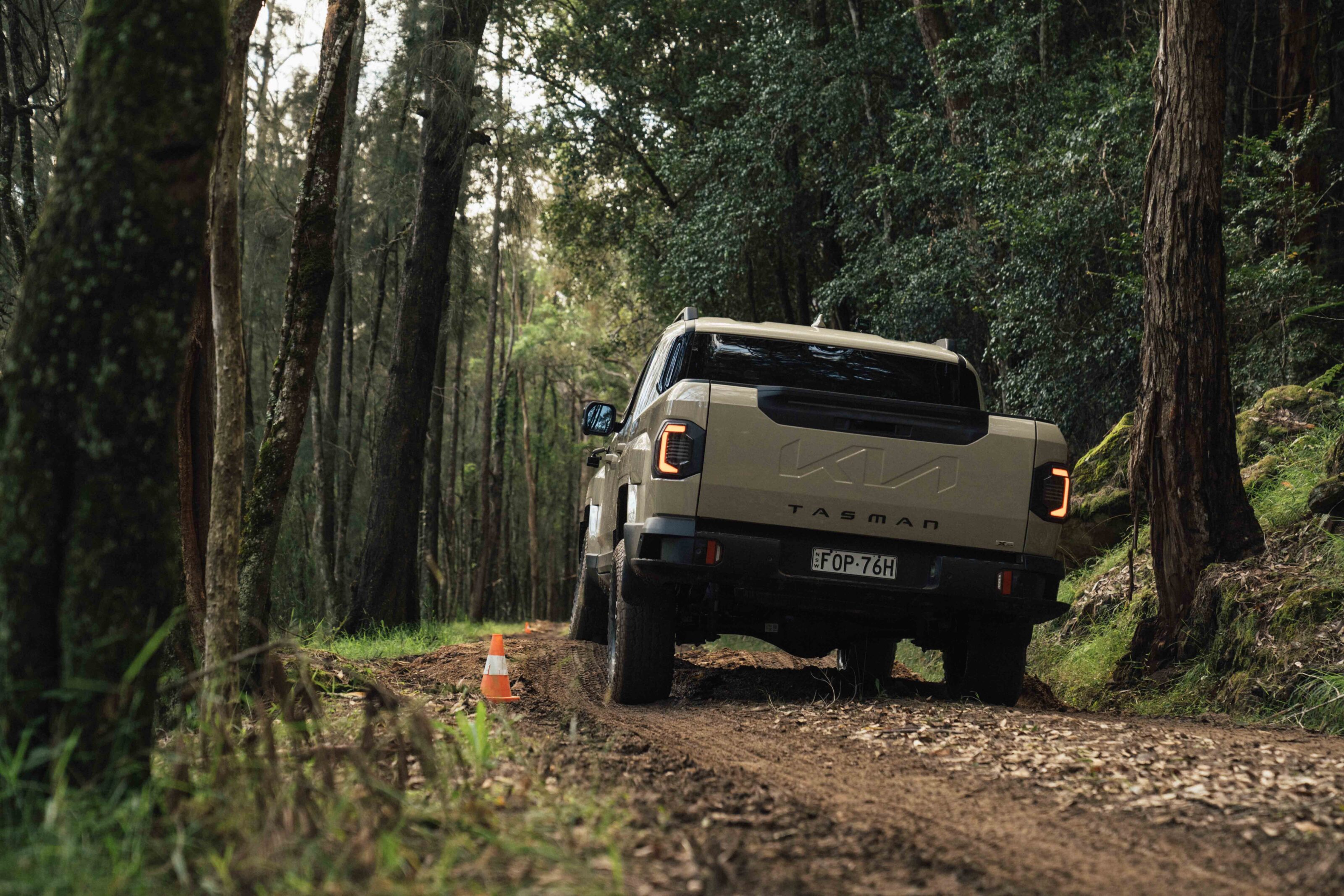
The Red pre-production Tasman also displayed a bull bar which will be part of the factory accessories offering, and the photos revealed one fitted with a canopy as well.
This brief off-road drive indicated that the Tasman has that solid feel of a well-built vehicle, with good wheel travel and fast-acting electronic traction control. It was only the transmission shifting calibration that stood out as still needing to be fully sorted. We expect this to be rectified by the time the Tasman is launched in full production trim in July when we will have a more extensive drive review for you.
We recommend
-
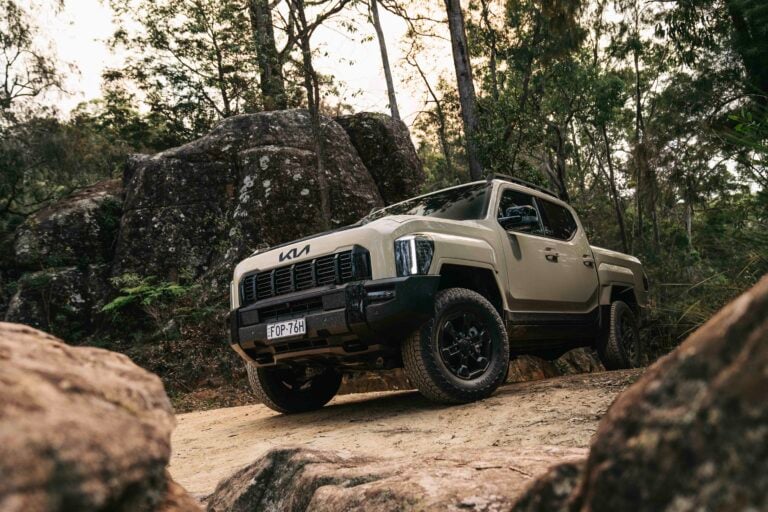 News
News2025 Kia Tasman dual-cab ute: Australian pricing and specs revealed
Ranger-fighting Tasman is one step closer to launch, with Kia confirming Australian details ahead of July launch
-
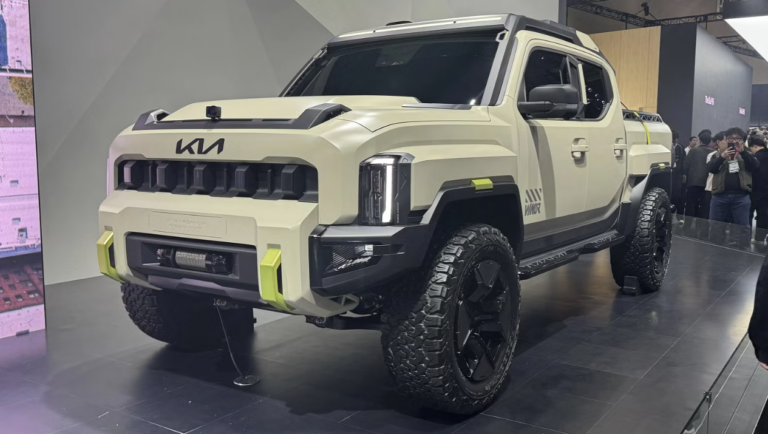 News
NewsHardcore Kia Tasman Weekender concept unveiled
Off-road-ready Tasman concept takes to the stage at Seoul Motor Show
-
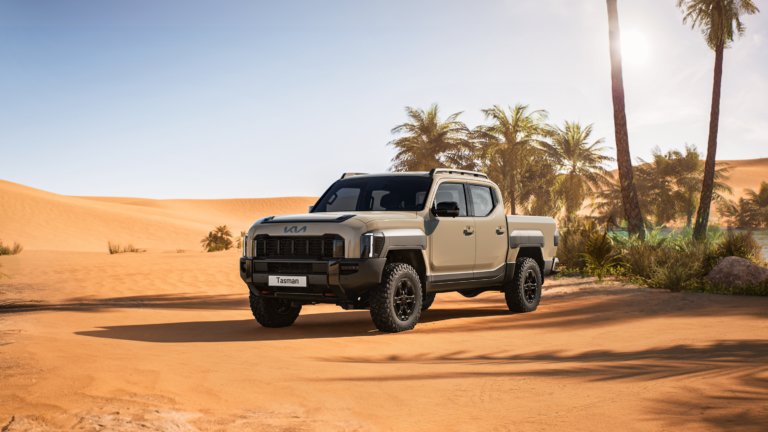 News
News2025 Kia Tasman: International pricing hints at how much it will cost in Australia
South Korean pricing indicates cheaper-than-expected cost for Tasman ute


